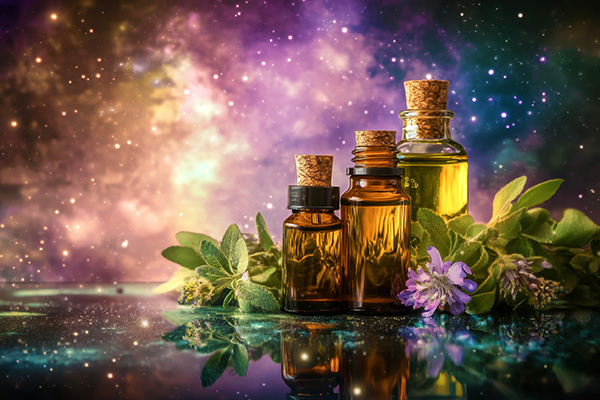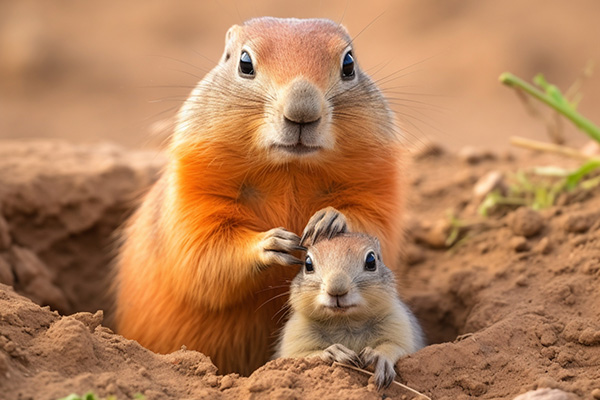shamanism
Power And Protection From Your Ancestors
 I come from a long line of female herbalists of European origins on my mother’s side of the family. They were seers, healers, and prophets who combined their psychic gifts with ancient healing practices. Today, they still come to me during meditation, to offer wisdom.
I come from a long line of female herbalists of European origins on my mother’s side of the family. They were seers, healers, and prophets who combined their psychic gifts with ancient healing practices. Today, they still come to me during meditation, to offer wisdom.
The family’s mainly Germanic connection is one I’ve researched for many years, but more recently I discovered that my ancestors crossed into Scandinavian and Norse territories too, which suggests a bloodline of fierce women who were warriors of their time.
It’s really not surprising to me, as even my own mother today, who is 84 years old, can still kick anyone’s butt who crosses her path in an unkind way! I always knew she was strong when I was little, and I always admired her power and independence.
I was born in the year 1966, which in Chinese Astrology equates to the year of the Fire Horse. Fire Horse people are only born once every six decades. It is a rare sign and, according to legend, many girl babies born in certain parts of Asia in that year were killed at birth, because they were believed to be dangerous, uncontrollable or resistant to rules or dogma.
My Fire Horse nature shows up in me from time to time, but only when I’m really pushed beyond reason by someone who is taking advantage of, or harming me, or my children.
Life will sometimes push us to step into our core strength and fight for what is right. There are many people on the spiritual path who feel stepping into your true power or fighting for what is right is ‘unspiritual’ or egotistic.
A Beginner’s Guide To Holistic Healing
 True healing is about more than just easing lower back pain or calming anxious thoughts. It’s about supporting the “whole you” so you can live in greater balance, joy and peace.
True healing is about more than just easing lower back pain or calming anxious thoughts. It’s about supporting the “whole you” so you can live in greater balance, joy and peace.
It means caring for the body, the heart, the mind, and the soul. While each of these areas can be worked on separately, the deepest transformation happens when they’re all supported together. That’s the essence of holistic healing.
For many people who are new to holistic healing, it can seem complex, mysterious, or even intimidating. Often, there’s curiosity, but also uncertainty about where to begin, especially if they’ve never tried it before.
Some worry they’re not knowledgeable enough, or believe it’s something only meant for people with special spiritual insight or advanced esoteric understanding. Others may wonder if they’ll “do something wrong” or fear they won’t understand what’s happening during a session.
These feelings are completely normal, but they can hold you back from exploring something that could be deeply supportive and life-changing.
The truth is, holistic healing doesn’t have to be complicated or overwhelming. You don’t need to know every technique or understand all the details to benefit from it. An experienced healer will help you find the best route, even if you’ve never walked the path before.
If you’ve never had a holistic healing session, here’s what often happens: You might arrive thinking you need one specific kind of support, but a skilled healer will take time to tune in and see what you truly need most. Sometimes they’ll use the method you requested, and other times they may suggest a different approach, or even combine several techniques, to support you in the best possible way. The aim isn’t just temporary relief; it’s to start you on a healing journey you can continue long after the session ends.
A Mystic’s Guide To The Final Months Of 2025
 As we move into the final months of 2025, the energy around us feels less like things are quietly wrapping up and more like they are building toward a big, undeniable turning point.
As we move into the final months of 2025, the energy around us feels less like things are quietly wrapping up and more like they are building toward a big, undeniable turning point.
This is not just the year slowly running out of days. It is a season where the universe seems to be leaning in close, asking us to pay attention. There is a sense that something important is in motion, even if we cannot see all the pieces yet.
These last months carry a certain electricity in the air, a quiet pressure that says, “Something is shifting. Are you ready?” But it’s not about pushing harder or doing more. It is about listening more deeply, trusting more fully, and allowing the old ways to loosen their grip so we can step into what is next.
We are in a threshold season: that sacred in-between space where the old patterns no longer fit, but the new has not fully taken form. It can feel strange, even uncomfortable, like standing in a doorway, grasping one handle while peeking into another room, not quite ready to let go, yet knowing you cannot stay where you are.
You might notice a pull to slow down, choose your time and energy more wisely, or step back from noise and distraction. This is not you being unproductive; it is your inner compass reorienting. Your soul knows when it is time to listen within. Sometimes it whispers through restlessness, sometimes through a craving for solitude, sometimes through sudden clarity about what no longer feels right.
Tuning In To The Psychic Wisdom Of Animals
 Animals are remarkably attuned to our moods. They can sense the vibrations of our thoughts and emotions before we even speak. Their psychic sensitivity defies logic and reaches into the realm of the mystical.
Animals are remarkably attuned to our moods. They can sense the vibrations of our thoughts and emotions before we even speak. Their psychic sensitivity defies logic and reaches into the realm of the mystical.
I’ve always been aware that animals can see into our hearts and minds in ways we humans have long forgotten. There’s a quiet, knowing wisdom in their eyes. They show a depth of understanding that suggests they perceive far more than we realize.
People across many cultures and spiritual paths believe that animals come into our lives to teach, guide, and inspire us. They reflect our energy, test our patience, demonstrate unconditional love, and remind us to stay present.
When viewed this way, our connection with animals feels like a sacred soul agreement where both parties grow and learn together.
This concept is also found in spirit animal or totem traditions, which are part of many Indigenous and shamanic teachings.
In these practices, each animal represents a specific type of wisdom or lesson that aligns with something we need to learn. Observing how animals behave or taking note of which ones appear in our dreams can reveal messages intended just for us. These connections help us discover who we really are and remind us that we’re all connected.
In Buddhism, especially the Mahayana tradition, there is a belief that all living beings, including animals, are caught in the cycle of rebirth. This belief fosters deep compassion because any animal could have once been a loved one from a past life. Witnessing animal suffering can open our hearts even more. Animals also teach us how to be mindful. They live in the present moment without attachment or worry. By caring for them with kindness, we grow spiritually and let go of some of our ego.
Why Psychics, Healers And Empaths Use Essential Oils
 Essential oils have long been sacred allies in spiritual and healing traditions around the world. Extracted from the aromatic essence of plants, these oils carry more than just fragrance; they carry the energetic blueprint and vibrational frequency of their botanical origins.
Essential oils have long been sacred allies in spiritual and healing traditions around the world. Extracted from the aromatic essence of plants, these oils carry more than just fragrance; they carry the energetic blueprint and vibrational frequency of their botanical origins.
In spiritual practice, essential oils are potent tools for emotional alignment, energetic cleansing, and deepening our connection to the self, spirit, and earth, far surpassing their role as mere pleasant scents.
Essential oils act as bridges between the tangible and the intangible. They provide sensory cues that encourage relaxation of the body, focus of the mind, and openness of the spirit. While they don’t replace deep inner work or professional guidance, they provide gentle, supportive energy that enhances existing practices.
The use of essential oils in spiritual practices is anything but modern. Prophets, priests, shamans, and oracles across the ancient world worked with aromatic oils and resins as sacred tools to facilitate divine connection, purification, and inner vision.
In ancient Egypt and the Near East, frankincense and myrrh were revered not just for their fragrance, but for their ability to open spiritual gateways. Frankincense, often referred to as “liquid gold,” was burned in temples and used in rites of passage. Myrrh featured in sacred anointing blends and was considered essential for emotional release and spiritual attunement.

